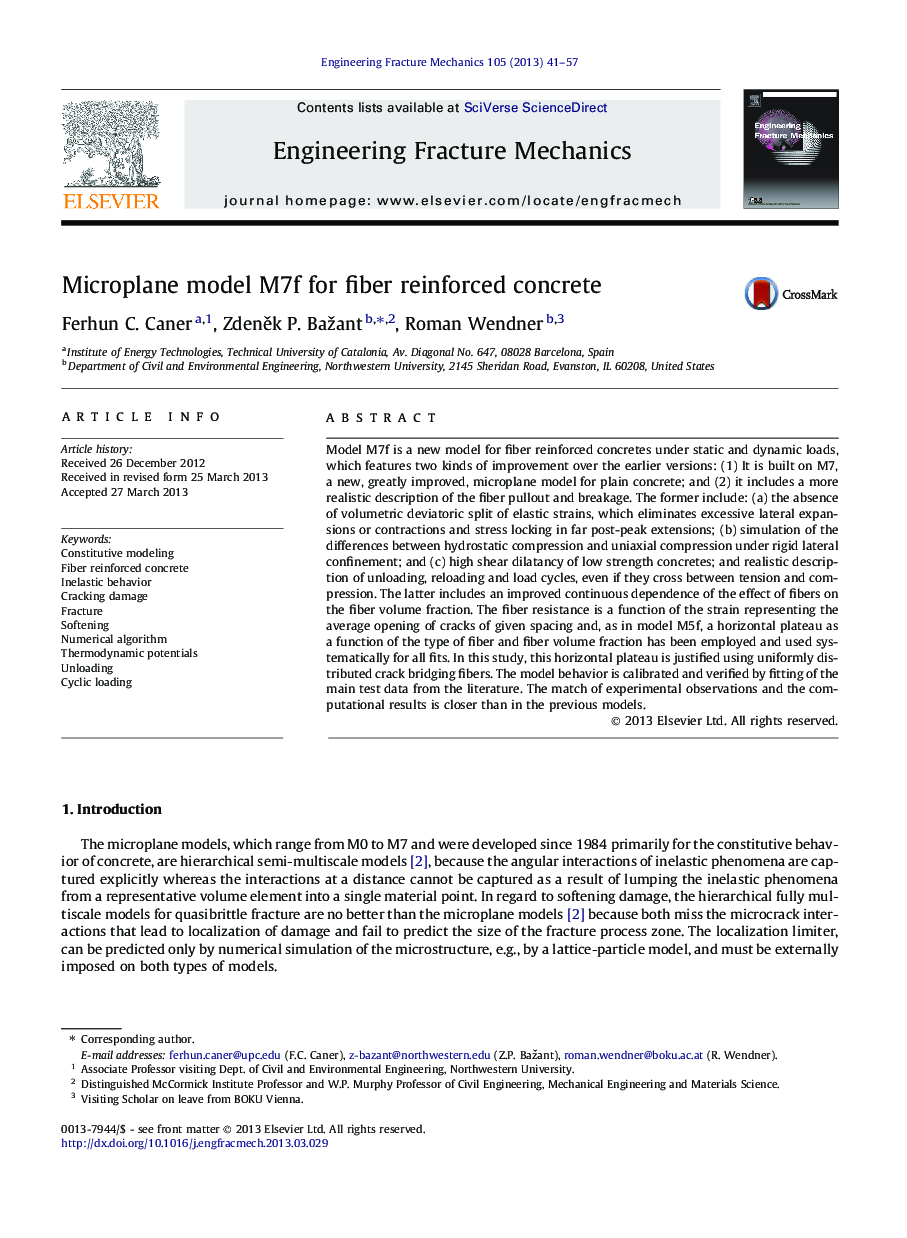| Article ID | Journal | Published Year | Pages | File Type |
|---|---|---|---|---|
| 770794 | Engineering Fracture Mechanics | 2013 | 17 Pages |
•A robust computational constitutive model for inelastic triaxial behavior of various fiber reinforced concretes.•A new justification of the overall fiber law employed using well-known individual fiber law.•Improved predictions and robustness compared to earlier versions of the model.
Model M7f is a new model for fiber reinforced concretes under static and dynamic loads, which features two kinds of improvement over the earlier versions: (1) It is built on M7, a new, greatly improved, microplane model for plain concrete; and (2) it includes a more realistic description of the fiber pullout and breakage. The former include: (a) the absence of volumetric deviatoric split of elastic strains, which eliminates excessive lateral expansions or contractions and stress locking in far post-peak extensions; (b) simulation of the differences between hydrostatic compression and uniaxial compression under rigid lateral confinement; and (c) high shear dilatancy of low strength concretes; and realistic description of unloading, reloading and load cycles, even if they cross between tension and compression. The latter includes an improved continuous dependence of the effect of fibers on the fiber volume fraction. The fiber resistance is a function of the strain representing the average opening of cracks of given spacing and, as in model M5f, a horizontal plateau as a function of the type of fiber and fiber volume fraction has been employed and used systematically for all fits. In this study, this horizontal plateau is justified using uniformly distributed crack bridging fibers. The model behavior is calibrated and verified by fitting of the main test data from the literature. The match of experimental observations and the computational results is closer than in the previous models.
